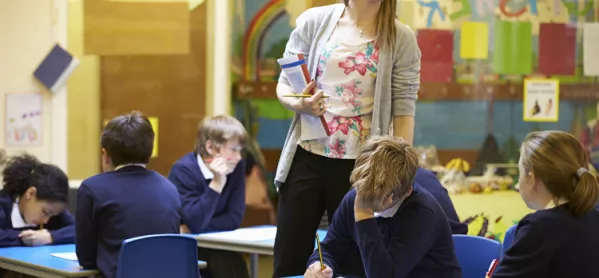10 things secondary teachers need to know about the new primary English curriculum

This list, although aimed at secondary English teachers, may well be of use to primary colleagues and others. Let me state from the off that I’m not trying to tell anybody how to do their job; I just think that the more we share knowledge and understanding between the two sectors, the less likely we are to fail the children who make the move between us. So here are 10 things that secondary colleagues might not be aware of about English in the new primary curriculum:
1. English is back
Strictly speaking it never went away, but for more than 15 years now, the “literacy” label seems to have stuck in primary schools. Some of us have been fighting this battle for a while, but slowly and surely the subject name is returning to its proper use. Happily, the even less likeable “numeracy” label seemed to die off much more quickly.
2. Speaking and listening is…confused
Most primary teachers will attest to the importance of speaking and listening. However, the new National Curriculum doesn’t offer much clarity on this. The statutory document offers 86 pages on the primary English Curriculum. Spoken language gets just one - and only 12 objectives across the whole of key stage 1 and 2.
3. Grammar matters
If grammar is not your thing, then it’s time to start brushing up: grammar is back in a big way in the new curriculum. I have met many Year 7s who couldn’t confidently identify nouns, verbs, adjectives and adverbs; now that content should be taught to Year 2. By Year 6 children are expected to have learned about noun phrases, relative clauses and even the subjunctive form (although that’s likely to be limited to common phrases in many cases, I’m sure).
4. Connectives are out
I’ve never quite understood why the word “connective” took hold. It seemed to be introduced by the literacy strategy, which itself contained a clear definition of the difference between conjunctions and other connectives, yet somehow we ended up with one label. Conjunctions are now to be taught in Year 3 (along with prepositions, followed by pronouns and determiners in Year 4), so there is really no excuse for the vague labelling any longer.
5. Class readers are back
I’ve always loathed the guided reading carousel approach that was brought in by the literacy strategy: 20 minutes is no time to do anything. Now the curriculum is quite explicit that children should have access to reading experiences including the reading aloud of whole books at a higher level of challenge than their own decoding ability.
6. Spelling may improve
The expectations of spelling in the new curriculum are significantly higher than in the past. Many words that secondary English teachers will recognise from the Year 7 spelling bank word lists (actually, business, caught, decide) now appear in the required lists for Year 3 and 4. Children in Years 5 and 6 are expected to be taught words such as mischievous and profession. Of course, things won’t change overnight - but hopefully things may improve in the coming years.
7. Authorial intent is clearer
One of the reasons I think primary schools have long struggled to get children anywhere near reaching level 6 in reading (aside from the fact that it has always been too easy to get level 5 in KS2) has been the lack of teaching of authorial intent. Most primary teaching has focussed on the old AFs 2 and 3 - retrieval and inference/deduction. Now the teaching of the craft of the author is much more explicit, particularly in upper Key Stage 2. (Beware: PEE will spread through primaries like a rash in the next year or two)
8. Text types are on the wane
Another of the literacy strategy’s legacies is the endless treadmill of text types being taught in primary. School crowbarred in umpteen different genres or text types each term in an effort to complete the set. None of those are specified any longer, and schools now have freedom (which personally I hope they’ll use) to focus on fewer types in more depth.
9. Poetry is popular
In the past, much of primary poetry has been about simple forms (limericks, haiku) or dreadful things like shape poetry. Although these won’t go away, there is now a much clearer expectation that children should be introduced to more published poetry, and - from as young as age 5 - should be learning to recite some poems by heart.
10. It’ll take a while to filter through
If you thought picking up children from different feeder schools was tricky before, it’s going to get worse before it gets better. The new curriculum has been rushed (much like the changes at secondary) and too little time has been given over to preparing teachers and schools. Those that were on the ball started making changes two years ago; others may only now really be waking up to the new demands. Expect to see some wide variation, particularly in newer aspects of the curriculum such as grammar and poetry. But who knows, maybe in a few years’ time you’ll be able to more reliably predict the knowledge your children will arrive with. Maybe.
Keep reading for just £1 per month
You've reached your limit of free articles this month. Subscribe for £1 per month for three months and get:
- Unlimited access to all Tes magazine content
- Exclusive subscriber-only stories
- Award-winning email newsletters



